Composition
Active ingredient: rimantadine hydrochloride;
1 tablet contains rimantadine hydrochloride – 0.05 g;
Excipients: lactose monohydrate, potato starch, microcrystalline cellulose, magnesium stearate, colloidal anhydrous silicon dioxide.
Dosage form
Pills.
Main physicochemical properties: tablets of white or white with a yellowish tint.
Pharmacotherapeutic group
Direct-acting antivirals.
ATX code J05A C02.
Pharmacological properties
Pharmacodynamics
Rimantadine hydrochloride is an amantadine derivative that exhibits pronounced antiviral activity. It is effective against various influenza A viruses and also exhibits antitoxic effects in influenza caused by type B viruses. Rimantadine inhibits virus replication in the early stages of the cycle by disrupting the formation of the viral envelope. Genetic studies have shown that the specific protein of the M2 gene of the virion plays an important role in the antiviral effect of rimantadine against influenza A virus. In vitro, rimantadine inhibits the replication of all three antigenic subtypes (H1N1, H2N2, H3N3) of the influenza virus identified in humans. Rimantadine does not affect the immunogenic properties of the inactivated influenza A vaccine.
Rimantadine is also effective against arboviruses, which are the causative agents of tick-borne encephalitis.
Pharmacokinetics
After single and multiple administration of the drug by patients of different age groups, no correlation has been established between the concentration of rimantadine in plasma and its antiviral activity.
After use, the drug is almost completely absorbed.
Adsorption is slow. Binding to blood plasma proteins is about 40%.
Metabolized in the liver. The half-life is 24-36 hours; 75-85% of the dose is excreted by the kidneys, mainly as metabolites, 15% – unchanged.
In chronic renal failure, the half-life increases by 2 times. In people with renal failure and in the elderly, the concentration of the active substance may increase to a toxic level.
In patients with chronic liver disease of mild to moderate severity, dose reduction is not required.
What are Remantadin CR tablets for?
Early treatment and prevention of influenza during an epidemic in adults and children aged 7 years and older.
Contraindication
- hypersensitivity to components of the adamantane group and to any of the components of the drug;
- acute and chronic liver diseases, acute and chronic kidney diseases, thyrotoxicosis.
Method of application
Take the tablets orally after meals, with water.
The use of the drug “Remantadin KR” should be started immediately after the first symptoms of influenza appear. The therapeutic effect is more pronounced if the drug is started within the first 48 hours.
Treatment for influenza: adults and children over 14 years of age: on the first day – 100 mg (two tablets) 3 times a day, on the 2nd and 3rd days – 100 mg (two tablets) 2 times a day, on the 4th and 5th days – 100 mg (two tablets) 1 time a day.
If your health worsens or does not improve within 3 days, you should consult a doctor.
Before using the drug in children, you should definitely consult a doctor.
Children aged 7-10 years – prescribe 50 mg (one tablet) 2 times a day; 11-14 years – 50 mg (one tablet) 3 times a day. The duration of treatment is 5 days.
Elderly patients (65 years and older): 100 mg (two tablets) once a day. Duration of treatment is 5 days.
Flu prevention: adults and children over 7 years old: 50 mg (one tablet) once a day. Duration of treatment – up to 15 days.
The drug should be started at the same time as the flu epidemic begins and used during the flu epidemic.
Application features
Pregnant women
“Remantadin KR” is contraindicated for use during pregnancy or breastfeeding.
Children
The use of the drug is contraindicated in children under 7 years of age.
Drivers
When using the drug, you should refrain from driving vehicles and working with potentially dangerous mechanisms.
Special safety precautions
“Remantadin KR” should be prescribed with caution to patients with gastrointestinal diseases, liver dysfunction, severe heart diseases and heart rhythm disorders, and the elderly. In such cases, a dose reduction is recommended.
With a history of epilepsy and anticonvulsant therapy, the risk of developing an epileptic seizure increases when using rimantadine. In this case, the dose of the drug should be reduced to 100 mg per day. If a seizure develops, the drug should be discontinued.
The drug contains lactose, therefore patients with rare hereditary forms of galactose intolerance, lactase deficiency or glucose-galactose malabsorption syndrome should not use the drug.
Interaction with other medicinal products and other types of interactions
“Remantadin KR” enhances the stimulating effect of caffeine and reduces the effectiveness of antiepileptic drugs.
Adsorbents, astringents and enveloping agents reduce the absorption of the drug “Remantadin KR”.
Cimetidine may enhance the effect of the drug.
Agents that acidify urine (ammonium chloride, paracetamol, ascorbic acid, etc.) reduce the effectiveness of the drug “Remantadin KR” due to its faster excretion by the kidneys.
Urine alkalizing agents (diacarb, sodium bicarbonate, etc.) increase the effectiveness of the drug Rimantadin KR due to a decrease in its excretion by the kidneys.
You should refrain from drinking beverages containing alcohol, as adverse reactions from the central nervous system may occur.
Overdose
In cases of overdose – symptomatic therapy to maintain vital body functions.
There is information about a case of poisoning with a chemical analogue – amantadine.
Symptoms: agitation, hallucinations, heart rhythm disturbances, fever, chills, sweating, arrhythmia, hypoesthesia, increased lacrimation, dysphagia, constipation, increased urination, stomatitis, eye pain.
Treatment: drug withdrawal, gastric lavage, intravenous administration of physostigmine to children – 0.5 mg, if necessary repeated administration, but not more than 2 mg / h. Rimantadine and amantadine are removed by hemodialysis.
Side effects
“Remantadin KR” is usually well tolerated.
Gastrointestinal disorders: common (≥ 1/100 to <1/10) – dyspepsia (nausea, vomiting).
Neurological disorders: often (≥ 1/100 to <1/10) – insomnia.
Storage conditions
Store in the original packaging at a temperature not exceeding 25 °C, out of the reach of children.
Shelf life – 3 years.

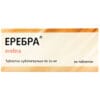
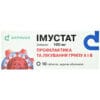

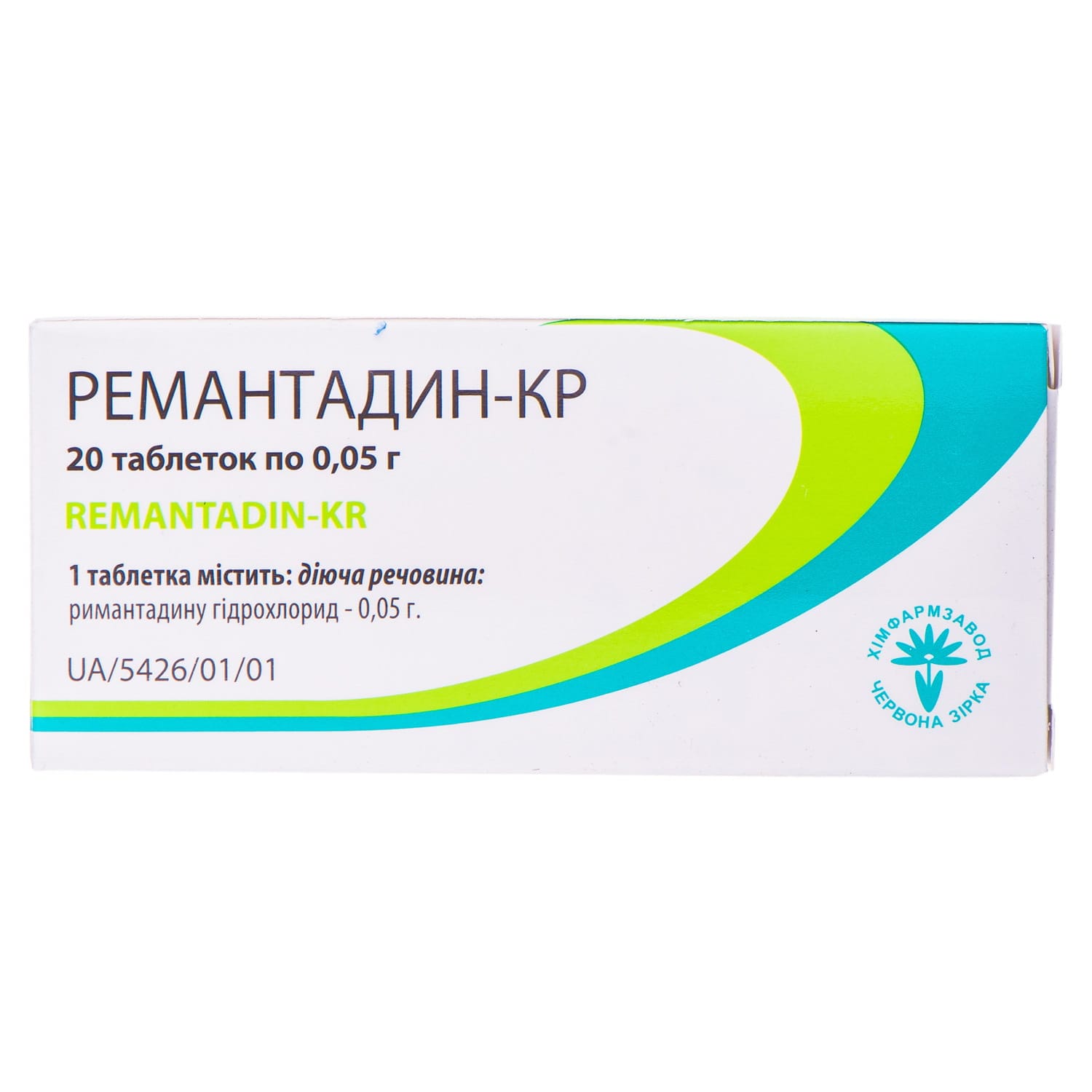
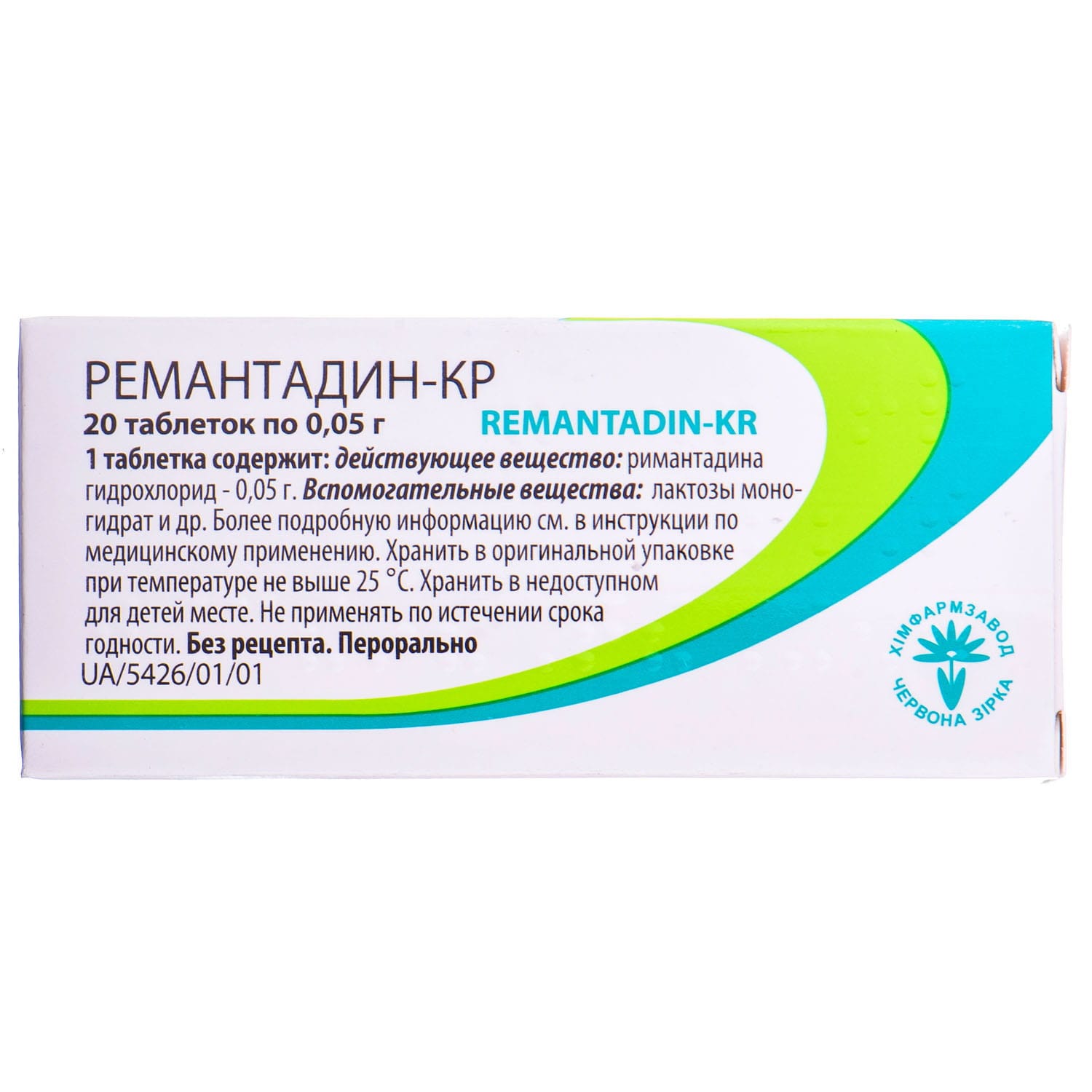

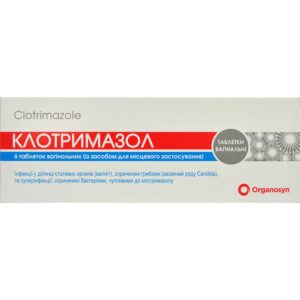
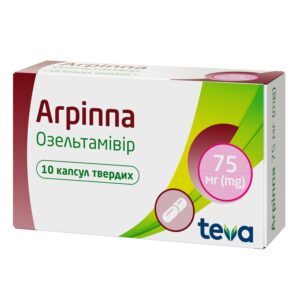
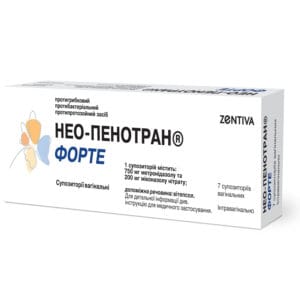
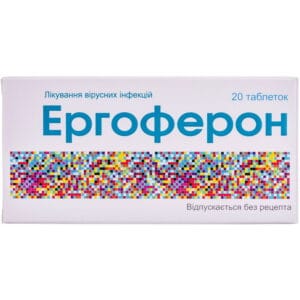
Reviews
There are no reviews yet.